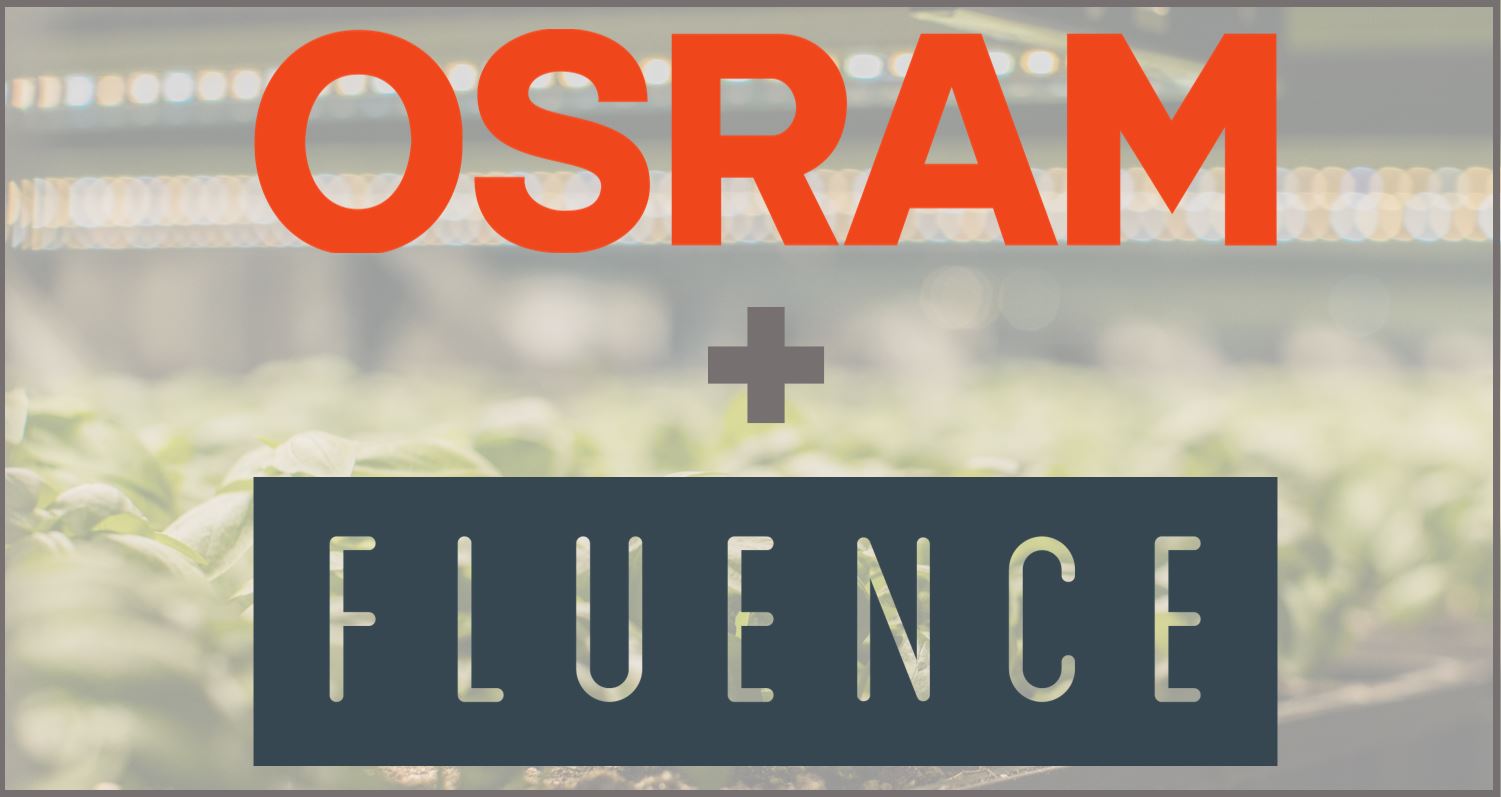May 7, 2018
Osram acquires Fluence, one of the world’s leading suppliers of smart grow lighting
OSRAM, a global high-tech lighting company, is acquiring U.S. horticulture lighting company Fluence Bioengineering. According to their press release, this move marks the most recent step in OSRAM's quest to become the leading global provider of intelligent plant growth solutions.
OSRAM, based in Munich, specializes in advanced technology around lighting, sensors and connectivity. They have a long history dating back more than 110 years. The company currently has approximately 26,400 employees worldwide and generated more than €4.1 billion in revenue for fiscal year 2017.
OSRAM has increased its involvement in the horticulture sector over the last several years. The company has developed research and specialty luminaires that enable tailor-made "light recipes" to be controlled for specific plant types. In 2017, Osram invested in the Munich-based startup Agrilution, which develops grow boxes with LED lighting for home use.
Fluence Bioengineering, founded in 2013, is a significantly smaller company based out of Austin, Texas. The company specializes in LED-based horticultural systems (using OSRAM LED chips) for a wide variety of applications including vertical farms and greenhouses in and around urban areas. Their goal is to move the world towards a more sustainable form of crop production.

The new RAZR Series from Fluence offers modular and scalable lighting for the world’s largest and densest vertical farms.
"Fluence is a very good strategic fit for OSRAM," according to OSRAM Innovation Manager Timo Bongartz, who spoke with Agritecture.com in an exclusive interview.
"Fluence has the typical strengths of a younger company," Timo explains. "They really put the customer in the middle of everything they do and have developed lights that perfectly fit into vertical farm and greenhouse applications."
OSRAM, on the other hand, has more of the strengths that you find in companies that have been around a while. "We have a lot of knowledge around long term product development and we also have a very large global reach," says Timo.
Timo sees the acquisition as a great win for both companies, who can make use of each other's unique strengths. "We can bring them into new markets a lot faster, and we are able to take advantage of their go-to-market strategy and also their flexible set up," says Timo. "Together, we can better serve customers around the world."
In the near future, there are three major directions that Timo sees for innovation in grow lighting systems: connectivity, so that operators have better control of lights using the cloud; sensor integration, to make systems smarter and more efficient; and a diversity of LEDs in each system, so that you can tune the light spectrum to exactly what specific plants need at certain times in their growth.
Timo believes that acquiring Fluence and linking together their knowledge of horticulture and technology will allow both companies to excel in each of these areas, and ultimately provide better solutions for their horticulture customers.

In the next 5 years, Timo sees indoor farming continuing to expand around the globe, and also playing a larger role at OSRAM. But exactly where, and by how much indoor farming will expand "depends totally on the region, and on the individual farmer's business model," says Timo.
What is certain is that as the population expands and more people continue moving into cities, the need for fresh nutritious produce is increasing and people in cities are demanding this sort of produce year-round. "Retailers, brick-and-mortar and online, are going to want a guaranteed supply of these vegetables," Timo predicts. He sees a great opportunity in this area for indoor farming to partner with retailers to deliver tailor-made salads and herbs for the end consumer.
Want to meet somebody from OSRAM and learn more about their growing solutions? You can find them: this week in Chicago at LIGHTFAIR, next week in the Netherlands at Horticultural Lighting Conference Europe where they will be giving a talk, or in June at GreenTech in Amsterdam.
